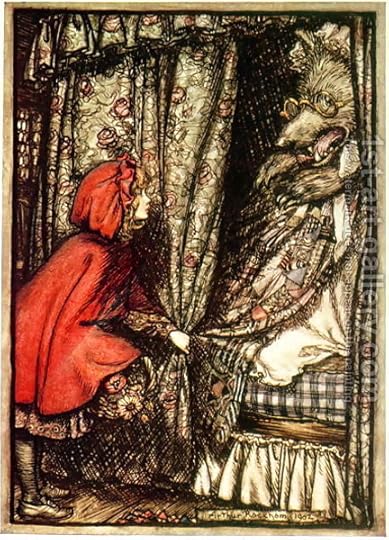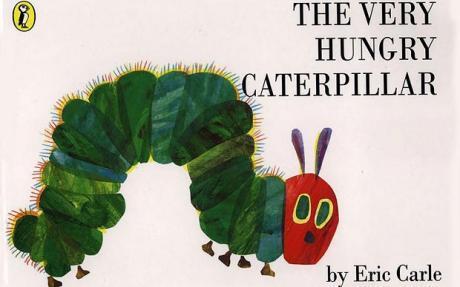Barbara Curtis's Blog, page 199
July 22, 2011
Homeschool encouragement
 Most families aren't homeschooling right now, so bookmark this for when you need a boost.
Most families aren't homeschooling right now, so bookmark this for when you need a boost. Thanks to Molly:
Beating the Homeschooling Blues (Instead of Singing Them)
You've met her. It's week eleven of the school year
and she's on week three. She can't bear to let her kids skip a single
Saxon problem. She is swimming in writing manuals from last year's
convention...and she hasn't found time to start reading them yet.Art supplies cost too much. Soccer practice conflicts with
dinner. Her toddler wrecks the read-aloud time. And the field trip
notice on the refrigerator is past the sign up date. Worst of all, she
has unsorted laundry on the bed. Woe is she!And boy is she tired. Exhausted. Hasn't slept in six years.
Hasn't eaten a full meal in four. Hasn't had a hair cut in ten. And
what's a manicure, she asks?Wait, is this you? I know it's been me at various times along the way.
We all whine and complain from time to time. But when I begin
to think, "I could be a much better homeschooling mother if my kids were
just in school," I know I'm in trouble.What about you? Are you becoming a 'Joan of Abekka'? 'Mother Theresa of Calculadders'? Martyrs for the homeschool cause?
Don't get me wrong. I know you are as committed to your kids as
I am to mine. I want those exquisite beings to fulfill their callings,
to discover their destinies, to...to...to pass the infernal year-end exams
so I don't feel like a total failure! (Sometimes that's truer, isn't
it?)What I need, what our mythic mom needs and what I bet you need,
is a fresh perspective and a healthy dose of practical change. Let's
go!
Do Something TodayDo one thing right now.
Sort through the eternal mail pile. Clean out the fridge. Order
the new math book. Pray. Jog. Read to your toddler. Look at an art
print. Cut your hair. Plan one day of school in advance. Shop for the
ingredients to the next science experiment. Just one.Don't plan to do it. Don't call your best friend about it. Don't wait to consult your hubby. Don't read a book on the subject.
I wanted saffron yellow walls for my kitchen for months. But
which yellow paint? How much should I buy? How would I know if I got the
best price in town? What if my husband hated the color? And worst of
all, how could I paint my walls yellow with five kids under foot?Then one day, I had had it. I marched all of us into Home
Depot, covered my eyes and picked the color card. I got the paint mixed,
paid for it and went home. I painted the wall that afternoon while the
toddler was awake! (Nuts, I know, but she wasn't even the one to spill
the bright yellow paint all over the apartment rug--ahem--we don't really need to know who did that, do we?)Every morning for the next year, I'd come bounding down the
stairs and smile first thing. That wall brightened my dreary little
apartment immeasurably and it reminded me of the power of
follow-through.
Don't Do Something ElseDon't call your girlfriend because you're bored. Don't leave
the house with lunch plates on the table. Don't flip through the Hanna
Andersson catalog for the eighth time (you know you can't afford those dresses). Don't sleep in... again. Don't get online before breakfast and stay there... until noon.Pick the most annoying or embarrassing habit and stop it today.
You don't have to promise for eternity. Just today. If you pick one to
stop per day, you'll be amazed at how many changes you can make. At
least you'll make a change each day.I, for one, would pay lots of money for little hand restraints
to 'just say no' to that mid-morning call to my best friend. When I stay
off the phone in the morning, it's amazing how much better
homeschooling goes. (Though the DTs demand some chocolate as
compensation.)
Give UpThat's right--wave the white flag. You will never be like her. Don't compare yourself to Miss Perfect.
So what if she does the entire lesson plan for Sonlight every
Read more at Brave Writer
day?Who cares if she can maneuver Cuisinaire rods with one hand while
stir frying dinner with the other?
Shakespeare in celebrity voices
My friend Carol - Invisi-Gal - sent this - really amazing and fun!
Impressionist Does Shakespeare in Celebrity Voices
What a gift! Be sure to show any of your kids interested in acting.
Houston housing needed 8/23-30
 #2 son Matt is coming to Houston August 23-30 for an audition - with #4 son to help him make a good time of it. They were able to get airfare from Dulles really cheap - roundtrip for under $200!
#2 son Matt is coming to Houston August 23-30 for an audition - with #4 son to help him make a good time of it. They were able to get airfare from Dulles really cheap - roundtrip for under $200!
Now they're looking for a place to stay. I know I have a lot of friends in Houston and am hoping someone might be interested in renting them a room cheaper than a hotel. They could also do some work in exchange.
They are really great kids and good guests, guaranteed to make you laugh!
Somewhere near Reliant Park. . .
email me.
Pictured: Matt, Josh, Zach, Tripp

India Pakistan Wagah Attari Border Closing Ceremony
In case you thought the Changing of the Guard was rigid. I'd never seen this before and thank New Advent for posting:
India Pakistan Wagah Attari Border Closing Ceremony (By Sanjeev Bhaskar - The Longest Road).
From Voice of America:
March 12, 2009
Flag Ceremony on India-Pakistan Border Kicks Up DustLinda Blake | Wagah on the India-Pakistan border
Every day at sunset since 1947, spectators have gathered at the Wagah Border crossing between India and Pakistan to watch rival border guards kick up dust in an entertaining flag-lowering ceremony. This daily display of shouts and stomps serves as a unique gauge of Indo-Pakistani relations - increasingly tense since the Mumbai terrorist attacks last November.
The sound guards make may seem like a war cry. Especially as they march toward the historically tense Wagah Border - India and Pakistan's only major road crossing.
But, to the thousands of spectators, the scene, in the heart of the divided Punjab - between Lahore and Amritsar - is more like a cricket match than a military ceremony.
Indian school children wave flags as women - and a few men - dance to patriotic Bollywood songs.
Many try to out-do their Pakistani counterparts who are cheering from the other side of the border.
It is called the Beating Retreat Ceremony. Every day at sunset since the partition of the then-British ruled sub-continent in 1947, the gates of the so-called "Berlin Wall of Asia" fling open.
Indian Border Guards in khaki and Pakistani Rangers in black puff out their chests in a 30-minute display of synchronized stomps and shouts.
One Indian Border Guard points out that the higher the leg kicks, the more bitter the relations. Five years ago this would be punctuated by taunts and chest beating. But, after a four day meeting between border forces in 2004, the two sides agreed to cool down the ceremony to reflect improved relations.
For Indians such as Naina from Delhi, this virtual war-show actually makes them feel more connected to their Pakistani neighbors.
"We were together once upon a time," Naian recalls, "If you back to the history... and I guess this show brings both of the countries together."
Despite recent political tensions, the flag lowering ceremony is the one daily act of joint solidarity between India and Pakistan, which have fought three wars against each other.
Soon after the ceremony ends, curious spectators on both sides push towards the border gate. Many, like one Indian man, express their patriotism.
And many of those cheering say they would like to go to Pakistan one day.
It is mixed emotions such as these that maintain the deep divide between the two countries, and keeps the border sealed.
In Search of Shakespeare - PBS documentary
 Who said Shakespeare was boring? If you decided when you were in school that The Bard was not your cup of tea, I urge you to revisit that closed door, ppen it wide and let some fresh air in.
Who said Shakespeare was boring? If you decided when you were in school that The Bard was not your cup of tea, I urge you to revisit that closed door, ppen it wide and let some fresh air in. You and your family will be so blessed exploring and discovering Shakespeare together. My favorite film in the whole world is Henry V - our family has watched it many, many times together and my sons find many occasions to quote the unforgettable lines from the leader portrayed as perfect in many ways.
Tripp and I also came across this PBS documentary series, which portrays Shakespeare's life with the same drama and gusto found in his plays. Hosted/narrated/traveled with Michael Woods, who always does an incomparable job taking viewers by the hand and connecting them with history and art, this is a gem for the whole family to share. Woods visits all the Shakespeare places - from his birthplace to the Globe Theater, reviewing actual source documents hundreds of years old to reinforce the ups and downs of Shakespeare's family - from his roots to his own children.
Check to see if your library has a copy. Also available at Netflix and Amazon, where you can read the reviews as well:
July 21, 2011
Is Scott York really a Republican?
Please send this far and wide. Saturday is our local convention. If you have registered as a delegate, please vote for Steve Stockman and be rid of this out-for-himself politician once and for all:
Is Scott York really a Republican?
Please see all my posts on Scott York.
July 20, 2011
Jonny's MRI, Tim and Pat's wisdom teeth
I was worried about him holding still, but he did great:


I chose an open MRI place in Winchester. On the way home, we stopped to see Samantha and my grandchildren in Berryville. My two oldest grandsons had just had their wisdom teeth removed and were looking pretty funny with the big icebags around their faces. I took pictures for our family blog - which Ben just created for us last week - but they said no to pictures on Grandma's blog :)
I was watching Samantha reading the post-removal instructions and refilling ice bags and giving them their medicine and remembering doing that myself for the first time when she was in her late teens (so far, all our kids have had to have their wisdom teeth removed).
Another milestone in motherhood. I am so proud of her!
We'll get Jonny's results in a couple days.
Winchester/Shenandoah Theater: Oliver! 7/20-31
 I love to turn readers on to the many performing arts events around Loudoun County, but especially when there's some personal involvement, as in hearing from the parent of the young man fortunate to be cast as the Artful Dodger in a real, grown-up, professional production of Oliver!, which opened tonight at Shenandoah University Summer Theater:
I love to turn readers on to the many performing arts events around Loudoun County, but especially when there's some personal involvement, as in hearing from the parent of the young man fortunate to be cast as the Artful Dodger in a real, grown-up, professional production of Oliver!, which opened tonight at Shenandoah University Summer Theater:Barbara,
As an avid reader of Mommy Life (even though I am a dad) I know how much you enjoy local theater.
I wanted to let you know about an upcoming performance of the musical Oliver! Our son Tim, 12,
plays the role of the Artful Dodger. I would like to invite you and your readers to come out and see one of theperformances that run from July 20 - 31 at the theater in Winchester.
More info and tickets: SSMT
Write-up
I have been watching the rehearsals and as an unbiased (hahaha) reviewer I can tell you thatit is going to be wonderful!
I hope to see you and your family there!
Paul Boyer
Leesburg, VAJuly 20 - 31
Music, Lyrics and Book by Lionel Bart
Produced for the Broadway stage by David Merrick
and Donald AlberyWhen Oliver, one of the boys in a London workhouse, asks for a second
helping of gruel, he finds himself soon "sold" to the undertaker.
Running away the next morning, he is picked up by the Artful Dodger and
is taken to meet this colorful character's friends. Thus starts a
whirlwind of an introduction to life as Oliver has never known it. Based
on the classic by Charles Dickens, the story moves to the musical score
of Lionel Bart with such familiar numbers as "Food, Glorious Food,"
Where Is Love?," and "As Long as He Needs Me."Purchase Tickets Online
There is a $2.00 per ticket charge for online reservations
Why children need traditional fairy tales
 I first ran this in April, 2010, but as I read the preceding NYT article on the dumbing down of playgrounds, this immediately came to mind as a natural companion piece.
I first ran this in April, 2010, but as I read the preceding NYT article on the dumbing down of playgrounds, this immediately came to mind as a natural companion piece.In the over feminization of our culture - that is, letting women take the reins about how things should work - we've really squelched a lot of archetypal challenges/risks/rites of passage by which children learn and grow. I've spoken here at length about the problem of mothers not letting their boys be boys, instead trying to control their natural desires to move and make noise and explore and conquer.
In the area of reading, much of what is published for children today is warm and fuzzy stories designed to make kids feel good about themselves, be "nice" and politically/environmentally correct. In so many areas, the male influence on the upbringing of children seems to have been completely suppressed as the mother puts control and safety first.
I think of how the dad's natural instinct is to throw his baby up high in the air and catch him, as the mother gasps "Be careful!" Turns out that this instinctive behavior is actually helpful in developing baby's vestibular system. It stimulates the inner ear, which helps in developing baby's overall sense of balance and orientation.
In so many ways, women's tendency to overprotect - which has become dominant - is preventing today's children from reaching their potential.
Even when it comes to literature:
Traditional fairytales 'not PC enough'
Parents have stopped reading traditional fairytales to their
children because they are too scary and not politically correct,
according to research.
By Graeme Paton, Education Editor
Published: 2:14PM GMT 05 Jan 2009
Favourites such as Snow White and the Seven Dwarfs, Cinderella and
Rapunzel
are being dropped by some families who fear children are being
emotionally
damaged.
A third of parents refused to read Little Red Riding Hood because she
walks
through woods alone and finds her grandmother eaten by a wolf.
One in 10 said Snow White should be re-named because "the dwarf
reference
is not PC".
Rapunzel was considered "too dark" and Cinderella has been dumped
amid fears she is treated like a slave and forced to do all the
housework.
The poll of 3,000 British parents - by TheBabyWebsite.com - revealed a
quarter
of mothers now rejected some classic fairy tales.
Sarah Pilkinton, 36, a mother-of-three from Sevenoaks, Kent, told
researchers: "I
loved the old fairy stories when I was growing up. I still read my
children
some of the classics like Sleeping Beauty and Goldilocks, but I must
admit
I've not read them The Gingerbread Man or Hansel and Gretel.
"They are both a bit scary and I remember having difficulty sleeping
after being read those ones when I was little."
Two-thirds of parents said traditional fairytales had stronger morality
messages than many modern children's stories.
But many said they were no longer appropriate to soothe youngsters
before bed.
Almost 20 per cent of adults said they refused to read Hansel and Gretel
because the children were abandoned in a forest - and it may give
their own
sons and daughters nightmares.
A fifth did not like to read The Gingerbread Man as he gets eaten by a
fox.
The most popular book read at bedtime is now The Very Hungry Caterpillar
by
Eric Carle.
The simple tale, which features a greedy caterpillar eating too much
food, was
written in 1969.
It also emerged 65 per cent of parents preferred to read their children
happier tales at bedtime, such as the Mr Men, The Gruffalo and Winnie
the
Pooh.
Three quarters of mothers and fathers try to avoid stories which might
give
their children nightmares and half of all parents would not consider
reading
a single fairy tale to their child until they reached the age of five.
Top bedtime stories of 2008:
1. The Very Hungry Caterpillar, Eric Carle (1969)
2. Mr Men, Roger Hargreaves (1971)
3. The Gruffalo, Julia Donaldson (1999)
4. Winnie the Pooh, A.A. Milne (1926)
5. Aliens Love Underpants, Claire Freedman & Ben Cort (2007)
6. Thomas and Friends from The Railway Series, Rev.W.Awdry (1945)
7. The Wind in the Willows, Kenneth Grahame (1908)
8. What a Noisy Pinky Ponk!, Andrew Davenport (2008)
9. Charlie and Lola, Lauren Child (2001)
10. Goldilocks and the Three Bears, Robert Southey (1837)
Top 10 fairy tales we no longer read:
1. Snow White and the Seven Dwarfs
2. Hansel and Gretel
3. Cinderella
4. Little Red Riding Hood
5. The Gingerbread Man
6. Jack and the Beanstalk
7. Sleeping Beauty
8. Beauty and the Beast
9. Goldilocks and the Three Bears
10. The Emperor's New Clothes
What is sad about well-intentioned parents filtering out traditional fairy tales (and I don't mean the Disney versions) is that they are eliminating an important traditional resource in the child's psychological development.
If you have time to read it, I heartily recommend Bruno Bettelheim's The Uses of Enchantment: The Meaning and Importance of Fairy Tales, which will open up a world of new understanding to you about the critical role played by traditional children's literature. I first read the book 30 years ago - and it helped me look beneath the surface to understand not just the specific fairy tales Bettelheim discusses, but also traditional poems, songs and nursery rhymes.
To whet your appetite, I've excerpted some highlighted portions of the Introduction from my dog-eared copy:
The prevalent parental belief is that a child must be diverted from what troubles him most: his formless, nameless anxieties. . .Many parents believe that only conscious reality or pleasant wish-fulfilling images should be presented to the child - that he should be exposed only to the sunny side of things. But such one-sided fare nourishes the mind only in a one-sided way, and real life is not all sunny. . .
[Here] is exactly the message that fairy tales get across to the child in manifold form: that a struggle against severe difficulties in life is unavoidable, is an intrinsic part of human existence- but that if one does not shy away, but steadfastly meets unexpected and often unjust hardships, one masters all obstacles and at the end emerges victorious.
Modern stories written for young children mainly avoid these existential problems, although they are crucial issues for all of us. The child needs most particularly to be given suggestions in symbolic form about how he may deal with these issues and grow safely into maturity. . . .
It is characteristic of fairy tales to state an existential dilemma briefly and pointedly. This permits the child to come to grips with the problem in its most essential form, where a more complex plot would confuse matters for him. The fairy tale simplifies all situations. The figures are clearly drawn; and details, unless very important, are eliminated. All characters are typical rather than unique.
Contrary to what takes place in many modern children's stories, in fairy tales evil is as omnipresent as virtue. In practically every fairy tale good and evil are given body in the form of some figures and their actions, as good and evil are omnipresent in life and the propensities for bother are present in every man. It is this duality which poses the moral problem, and requires the struggle to solve it. . .
The figures in fairy tales are not ambivalent - not good and bad at the same time, as we are in reality. . . A person is either good or bad, nothing in between. One brother is stupid, the other clever. One sister is virtuous and industrious, the others are vile and lazy. One is beautiful, the others are ugly. One parent is good, the other evil. . . Presenting the polarities of character permits the child to comprehend easily the difference between the two, which he could not do as readily were the figures drawn more true to life, with all the complexities that characterize real people.
Christian parents, of course, have the greatest story ever told to share with their children. But I think the kind of understanding Bettelheim provides is like another tool in the parental toolbelt.
In this, I am not a Montessori purist. Maria Montessori believed that children under 6 - with their minds like absorbent sponges - could not distinguish between reality and fantasy; therefore they should only be presented with reality.
But Montessori taught me to see the world through a child's eyes, and I'm inclined to agree with Bettelheim, that children have fears and anxieties that they don't know how to speak about. Fairy tales meet an archetypal need, and parents need to understand and reconsider them:
"Fairy tales do not tell children the dragons exist.
Children already know that dragons exist. Fairy tales tell children the
dragons can be killed."--G.K. Chesterton
~~~~~~~
The Uses of Enchantment is probably available at your local library - also at Amazon, but none right now at PaperbackSwap.
Can playgrounds be too safe?
Companion piece: Why children need traditional fairy tales
From the New York Times, Science section:
Can a Playground Be Too Safe?
CHILDHOOD RELIC Jungle gyms, like this one in Riverside Park in Manhattan, have disappeared from most American playgrounds in recent decades.
By JOHN TIERNEY
Published: July 18, 2011LIVE AND LEARN A bad fall may mean a child is less likely to have a fear of heights later in life.
"I grew up on the monkey bars in Fort Tryon Park, and I never forgot how
good it felt to get to the top of them," Mr. Stern said. "I didn't want
to see that playground bowdlerized. I said that as long as I was parks
commissioner, those monkey bars were going to stay."
His philosophy seemed reactionary at the time, but today it's shared by
some researchers who question the value of safety-first playgrounds.
Even if children do suffer fewer physical injuries -- and the evidence
for that is debatable -- the critics say that these playgrounds may stunt
emotional development, leaving children with anxieties and fears that
are ultimately worse than a broken bone.
"Children need to encounter risks and overcome fears on the playground," said Ellen Sandseter, a professor of psychology at Queen Maud University in Norway. "I think monkey bars and tall slides are great. As playgrounds become more and more boring, these are some of the few features that still can give children thrilling
experiences with heights and high speed."
After observing children on playgrounds in Norway, England and Australia, Dr. Sandseter identified six categories of risky play:
exploring heights, experiencing high speed, handling dangerous tools,
being near dangerous elements (like water or fire), rough-and-tumble
play (like wrestling), and wandering alone away from adult supervision.
The most common is climbing heights.
"Climbing equipment needs to be high enough, or else it will be too
boring in the long run," Dr. Sandseter said. "Children approach thrills
and risks in a progressive manner, and very few children would try to
climb to the highest point for the first time they climb. The best thing
is to let children encounter these challenges from an early age, and
they will then progressively learn to master them through their play
over the years."Read more at the New York Times.
Barbara Curtis's Blog
- Barbara Curtis's profile
- 3 followers





